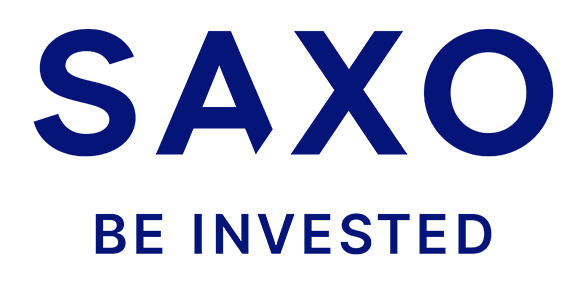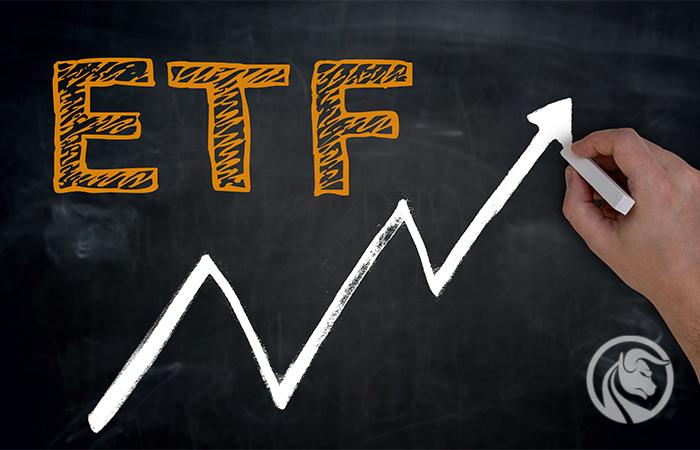What are ETFs? Introduction to investing in ETFs
ETF, i.e. Exchange Traded Funds are passive investment funds listed on the stock exchange. The goal of ETFs is to reproduce the movements of a given index or group of shares as closely as possible. Unlike actively managed investment funds, ETFs are managed passively. This means that the fund's role is limited to ensuring that the ETF price matches the index. In other words, the ETF achieves an identical return as the index on which it is based. In turn, active investment funds are trying to work out the highest possible rate of return for their members, usually higher than what the stock index offers. In the long run, however, this is not always successful.
It is worth noting that ETFs are a relatively new instrument on the Polish market. It was only in 2010 that certificates imitating the behavior of the WIG20 index appeared on the Polish WSE for the first time, i.e. in simple terms - ETFs on the WIG20. For comparison, in the USA ETFs have been operating since 1993. and in Western Europe since 1999.
No wonder that they are still little known in the Polish yard and relatively few Polish investors use them.
U Forex brokers you can find both ETFs and CFD based on ETF. In the case of the latter instrument, we deal with leverage and swaps.
The difference between ETF and other investment funds
Open-end mutual funds usually rely on many members putting their resources in the management of a given fund. The fund's management board makes investment choices and tries to generate the highest possible rate of return for its members. In return, it receives a remuneration - usually the fee for managing its funds within an investment fund is around 3-4% per annum.
The ETF differs from open-ended investment funds in many aspects. These differences are presented in the table below.
| ETF | Open Investment Fund |
| The fund is listed on the market and is acquired in the same way as shares (it is a security). | The Fund is not a listed security on the market. |
| Passive management style (the role of the fund is limited to reflecting the price of the index) | Active management style (the fund's role is to generate the highest possible profit) |
| You can buy and sell at any time at market price | Can be purchased through a distributor at a daily updated price. |
| Portfolio composition updated on each session | The composition of the portfolio is updated periodically - monthly or semi-annually |
| Possibility of deducting profit / loss from other capital revenues | It is not possible to deduct a loss from other capital income |
| Continuous trading | Quote once a day |
| Management fees below 1% per annum | Management fees about 3-4% per year |
The advantages of investing in ETF
Diversification without additional costs
Buying one or several ETFs allows you to create a diversified investment portfolio at very low fees.
Diversified portfolio of companies
It also limits the investor's time to search and select interesting companies. For example, if the investor decides that the technology industry will develop strongly in the coming years and is interested in investing in technology companies, choosing Technology Select SPDR Fund ETF (#XLK), which includes the largest technology companies, will save him time in choosing the composition portfolio and will allow you to quickly make a diversified investment in the industry in which it hopes.

CFD chart on ETF - Technology Select SPDR Fund ETF (#XLK), interval D1. Source: xNUMX XTB xStation
Great control over open positions
Unlike active investment funds, the investor still has control over his position. Has the ability to set an order stop loss and entry and exit from positions at any time.
Additionally, he can set sell limit and buy limit orders so that the position opens only at the price that interests him.
Low management fees
As I have already mentioned, ETF instruments have much lower annual fees due to the fact that they are a passive investment fund and we do not bear the costs of managing our money.
Easy access to foreign exchanges
If the investor decides that a given market, for example Thailand or Brazil, will grow, because currently there is, for example, a very undervalued investment in ETF on the index of the largest listed companies of a given country is a simple and fast way to invest their money in this market. Otherwise it would be very difficult.
The possibility of deducting tax losses
Profits and losses from ETFs can be deducted from capital income tax. If in a given year we gained profits from investments in ETF and losses from investments in shares, we can deduct ourselves from losses from shares from profits from ETF and thus reduce the tax due. The same principle obviously works the other way around. Losses from ETFs can be deducted from other capital revenues obtained.
Disadvantages of investing in ETFs
Since I have devoted so much space to describing the advantages of ETFs, there are also disadvantages.
- Not all ETFs have high liquidity
- Despite the effort to ensure that the ETF price perfectly reflects the price of the index, there are price discrepancies.
- There are even cheaper investment solutions for long-term investors
Where to invest in ETF
Currently, we can only buy ETFs based on the following indices on the WSE: WIG, S&P i DAX. However, most forex brokers have quite a wide range of ETFs and CFDs for this instrument. For example on XTB today we can find over 400 instruments of this type, in Admirals almost 397, a Saxo Bank almost 3000.
| Broker |  |
 |
 |
| End | Poland | Denmark | Great Britain |
| The amount of ETF on offer | approx. 400 - ETF approx. 170 - CFDs on ETFs |
3000 - ETF 675 - ETF CFDs |
397 - ETF CFDs |
| Min. Deposit | PLN 0 (recommended min. PLN 2000 or USD 500, EUR) |
0 PLN / 0 EUR / 0 USD | PLN 5 |
| Platform | xStation | SaxoTrader Pro Saxo Trader Go |
MetaTrader 5 |
CFDs are complex instruments and come with a high risk of losing money rapidly due to leverage. From 72% to 89% of retail investor accounts record monetary losses as a result of trading CFDs. Think about whether you understand how CFDs work and whether you can afford the high risk of losing your money.
As you can see the selection is huge. In the following articles I will discuss in more detail the categories of ETFs available and tips on how to navigate them and what to consider when choosing these instruments.






















![Forex Club – Tax 9 – Settle tax on a foreign broker [Download the Application] Forex Club - Tax 9](https://forexclub.pl/wp-content/uploads/2024/02/Forex-Club-Podatek-9-184x120.jpg?v=1709046278)
![Trading View platform – solutions tailored to the needs of traders [Review] trading view review](https://forexclub.pl/wp-content/uploads/2024/03/trading-view-recenzja-184x120.jpg?v=1709558918)
![How to connect your FP Markets account to the Trading View platform [Guide] fp markets trading view](https://forexclub.pl/wp-content/uploads/2024/02/fp-markets-trading-view-184x120.jpg?v=1708677291)
![How to invest in ChatGPT and AI? Stocks and ETFs [Guide] how to invest in chatgpt and artificial intelligence](https://forexclub.pl/wp-content/uploads/2023/02/jak-inwestowac-w-chatgpt-i-sztuczna-inteligencje-184x120.jpg?v=1676364263)


![WeWork – the anatomy of the collapse of a company valued at $47 billion [WeWork, part II] wework bankruptcy story](https://forexclub.pl/wp-content/uploads/2024/04/wework-bankructwo-historia-184x120.jpg?v=1711729561)
![Adam Neumann – the man who screwed up Softbank [WeWork, part AND] adam neumann wework](https://forexclub.pl/wp-content/uploads/2024/04/adam-neumann-wework-184x120.jpg?v=1711728724)





![How to transfer shares to another brokerage office [Procedure description] how to transfer shares to another brokerage house](https://forexclub.pl/wp-content/uploads/2024/03/jak-przeniesc-akcje-do-innego-biura-maklerskiego-184x120.jpg?v=1709556924)

![The most common mistakes of a beginner trader - Mr Yogi [VIDEO] Scalping - The most common mistakes of a beginner trader - VIDEO](https://forexclub.pl/wp-content/uploads/2024/03/Scalping-Najczestsze-bledy-poczatkujacego-tradera-VIDEO-184x120.jpg?v=1711601376)
![Learning patience: No position is also a position - Mr Yogi [VIDEO] Scalping - Learning patience - No position is also a position - VIDEO](https://forexclub.pl/wp-content/uploads/2024/03/Scalping-Nauka-cierpliwosci-Brak-pozycji-to-tez-pozycja-VIDEO-184x120.jpg?v=1710999249)
![When to exit a position and how to minimize losses - Mr Yogi [VIDEO] Scalping - When to exit a position and how to minimize losses - VIDEO](https://forexclub.pl/wp-content/uploads/2024/03/Scalping-Kiedy-wyjsc-z-pozycji-i-jak-minimalizowac-straty-VIDEO-184x120.jpg?v=1710336731)





![How to invest in ChatGPT and AI? Stocks and ETFs [Guide] how to invest in chatgpt and artificial intelligence](https://forexclub.pl/wp-content/uploads/2023/02/jak-inwestowac-w-chatgpt-i-sztuczna-inteligencje-300x200.jpg?v=1676364263)












